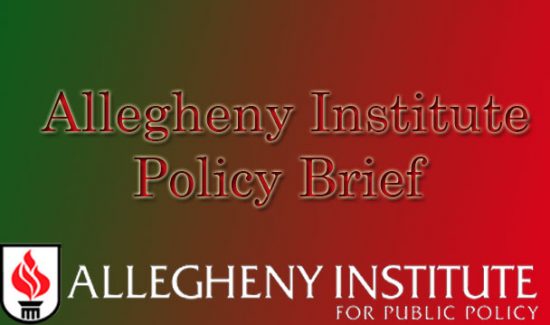Gaming Revenues Rose in 2015
(May 3, 2016)–Combined Gross Terminal Revenues (GTR) for Pennsylvania’s slot parlors came in at $2.366 billion in 2015, edging the 2014 total by about two percent. While this ends a two-year skid for GTR statewide, the 2015 value still fell below that of the three years preceding 2014; 2013 ($2.384 billion), 2011 ($2.407 billion) and 2012 ($2.47 billion). The rebound may or may not signal the start of an upward trend, but the news should be welcome for the industry.
The highest yearly GTR statewide occurred in 2012 when the average number of operating slot machines stood at 26,550, the most for any year since gaming commenced in Pennsylvania. Ten casinos were in operation at the beginning of 2012 and climbed to eleven when the resort casino at Valley Forge opened. Then halfway through 2013 another resort casino opened in Fayette County, bringing the count to the current total of twelve. Interestingly, there hasn’t been much movement in the average number of slot machines operating at the casinos. After peaking in 2012, the average number of machines dipped slightly to 26,400 in 2013, remained relatively constant in 2014 (26,470), before dropping to just below 26,300 in 2015.
On a per machine basis, the highest revenue also occurred in 2012 at $7,756. It slid to $7,526 in 2013 and even further in 2014 to $7,300—the lowest total since 2009. In 2015, per machine revenues rose slightly to just shy of $7,500.
As for performance at the individual casinos, GTR growth rates were mixed in 2015. The largest year to year increase was reported by the resort casino at Nemacolin (12%), followed by the Sands Bethlehem (6.6%), and the resort casino at Valley Forge (6.21%). It is worth noting that 2015 represents the Nemacolin casino’s second full year of operating and this increase may be the product of its "newness" and it might be difficult to sustain such rapid gains. Presque Isle in Erie had the weakest performance, likely because of the startup of nearby casinos in Ohio. While it has posted revenue declines for the past five years, the drop in 2015 of 1.6 percent was its smallest of the five years. Other casinos with revenue changes of less than one percent, either up or down, include Mount Airy (-0.62%), Mohegan Sun (-0.35%), Rivers (-0.09%), Sugar House (-0.06%), Harrah’s (0.24%), and Penn National (0.76%).
The Rivers casino in Pittsburgh, not only pays a minimum host fee of $10 million to the City, but also is required to pay $7.5 million toward the debt service on bonds used to build the Consol Arena—home of the Penguins. Thus, its success is very important to Pittsburgh. As we wrote years ago, the revenue projections for the Rivers at the time of the licensing process were too high to be credible, and indeed, they were not. The Gaming Control Board projected the casino would realize annual GTR from slot machines of about $362 million in its first full year, while casino management at the time predicted annual revenue of about $427 million. The Rivers casino’s best year for slot revenues was $284 million in 2013—far below either projection. In fact since the first full year in 2010 through 2015 they averaged only $273 million in annual GTR. Over the last two years they have realized about $277 million each year.
Casinos across the state began table games play in 2010 and quickly made room for the new form of gaming—and the Rivers was no exception.
Unlike slot machine revenues, which have bounced around over the last six years, table games revenues statewide have been rising steadily. In the first full year of play, 2011, table games gross revenues across the state hit $619.9 million. That year an average of 900 tables were in use in the ten casinos then operating. By 2015, the gross revenues had steadily increased by thirty percent to $808.1 million as the number of tables expanded twenty five percent to an average of 1,130 at twelve casinos. The addition of table games has been a success for Pennsylvania’s casinos—at least as measured on a gross revenue basis. Keep in mind that table games require more workers and as such have higher costs associated with them than do slot machines. But obviously they are quite popular as evidenced by the growing gross revenues.
Has the addition of table games helped the Rivers casino reach its original revenue projections?
The Rivers began table games in July 2010 with 85 tables per month and quickly earned $25.5 million from July to the end of the year. The average number of tables in play increased in 2011 to 104 then to 113 in 2012 and it has been stable ever since. The gross revenues from table games in the first full year, 2011, reached $67.5 million. Revenue over these first five (full) years ranges from a low of $67.5 million to a high of $71.4 million in 2015 a six percent increase over the period. The casino averaged about $69 million over these five years with some years up and some down. Taking the average annual revenues from table games over the last five years and combine it with the average amount of slot machine GTR during that time, total gross revenues from both forms of gaming are $342 million for the casino—still short of the Gaming Control Board’s projections of $362 million (from slots alone) and very short of the then-management’s prediction of $427 million.
On balance it appears that the gaming industry in Pennsylvania is healthy with some weak performers and some strong. While revenues from slot machines have stumbled a bit since the peak in 2012, gross revenues from table games have steadily risen—perhaps signaling a shift in gamblers’ preferences. It is not clear whether this trend will continue indefinitely. Undoubtedly, the industry will continue to look for new ways to expand its operations in the Commonwealth. With the introduction of internet gaming in neighboring New Jersey (see Policy Brief, Volume 15, Number 51), this may be their next step. One thing is certain, with state and local tax coffers relying on receipts from gaming revenues it is a form of entertainment that is now entrenched in the Commonwealth.
Frank Gamrat, Ph.D., Sr. Research Associate
If you wish to support our efforts please consider becoming a donor to the Allegheny Institute.The Allegheny Institute is a 501(c)(3) non-profit organization and all contributions are tax deductible.Please mail your contribution to:
The Allegheny Institute
305 Mt. Lebanon Boulevard
Suite 208
Pittsburgh, PA15234




